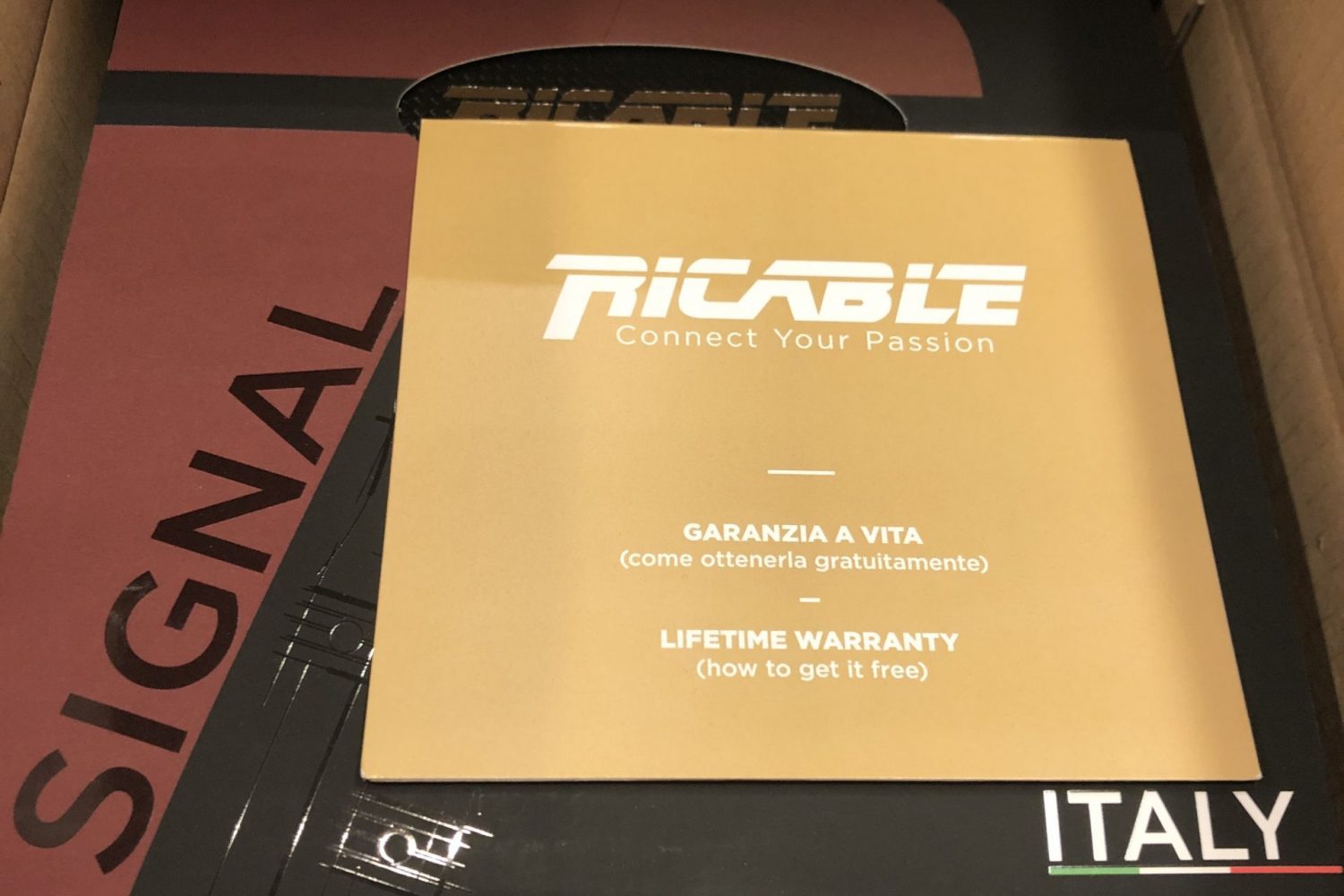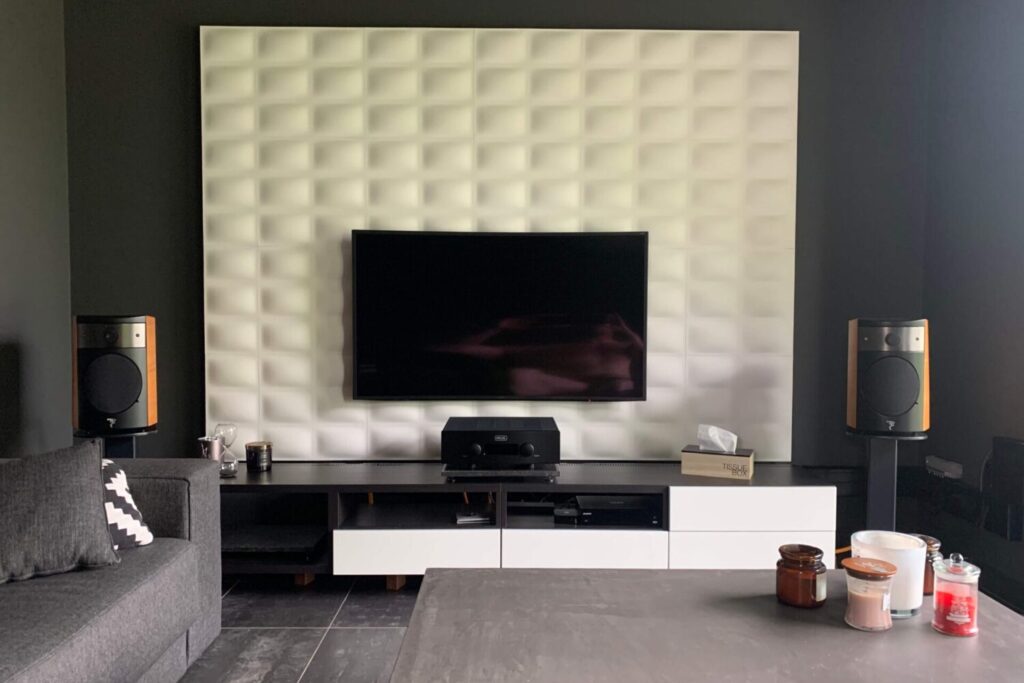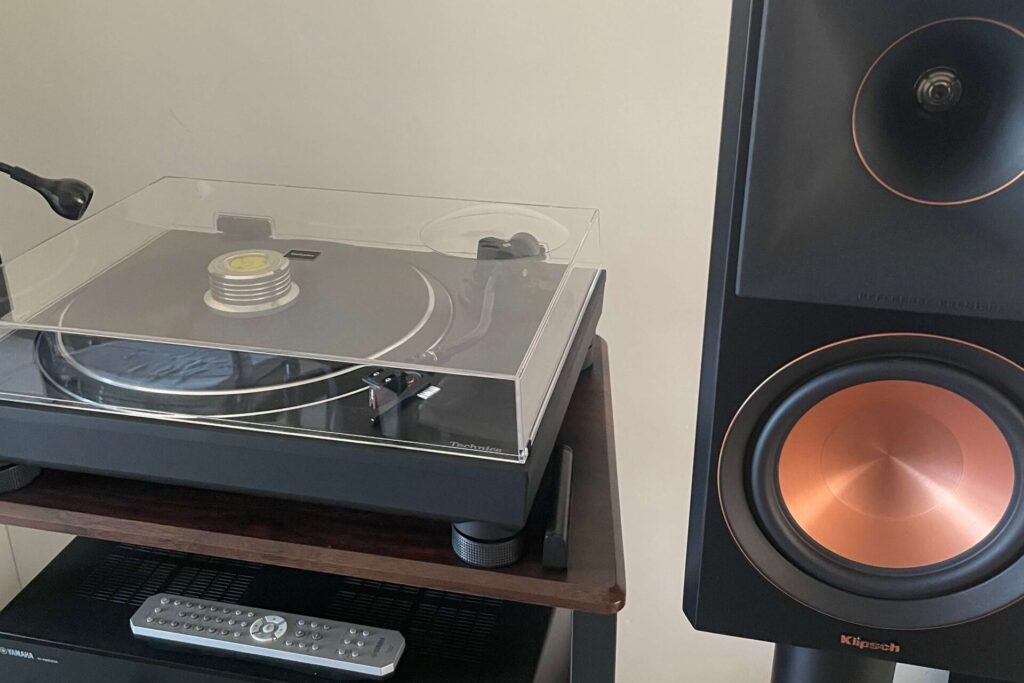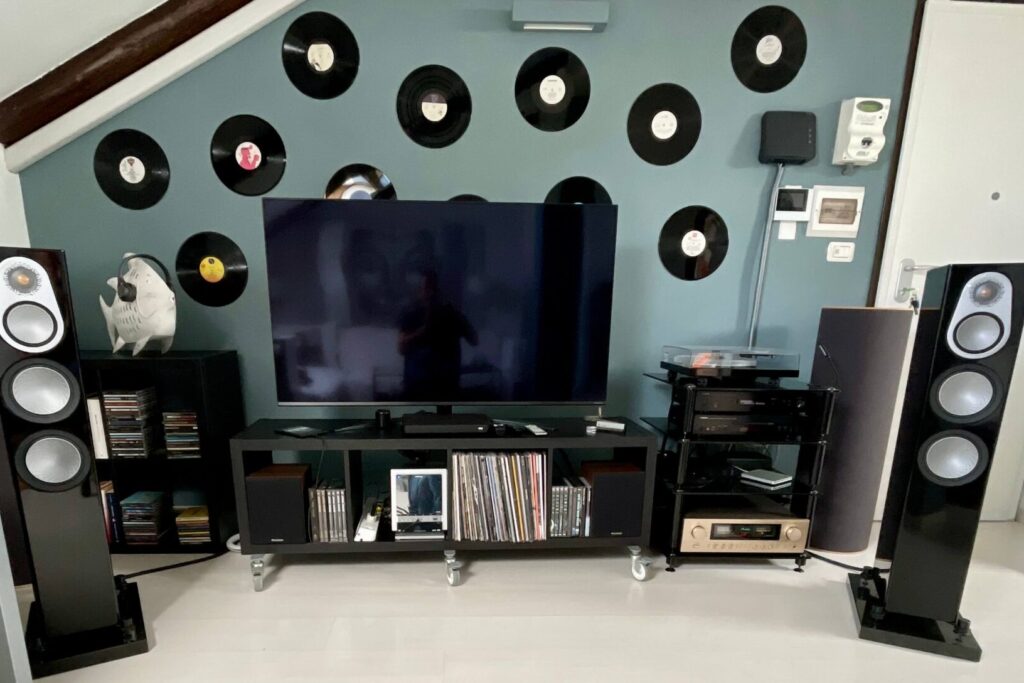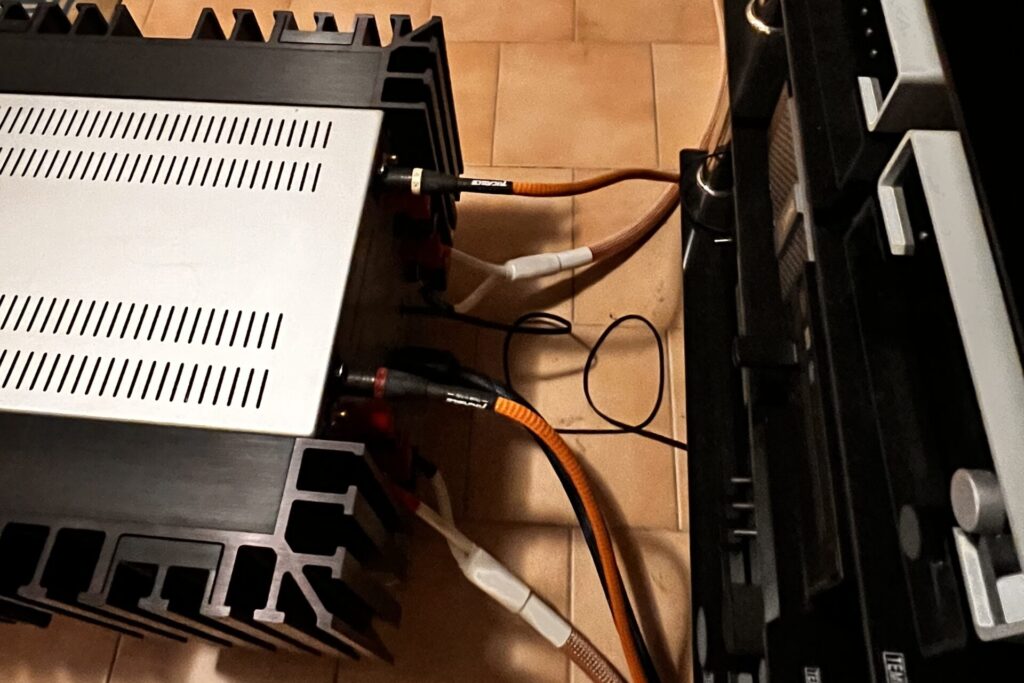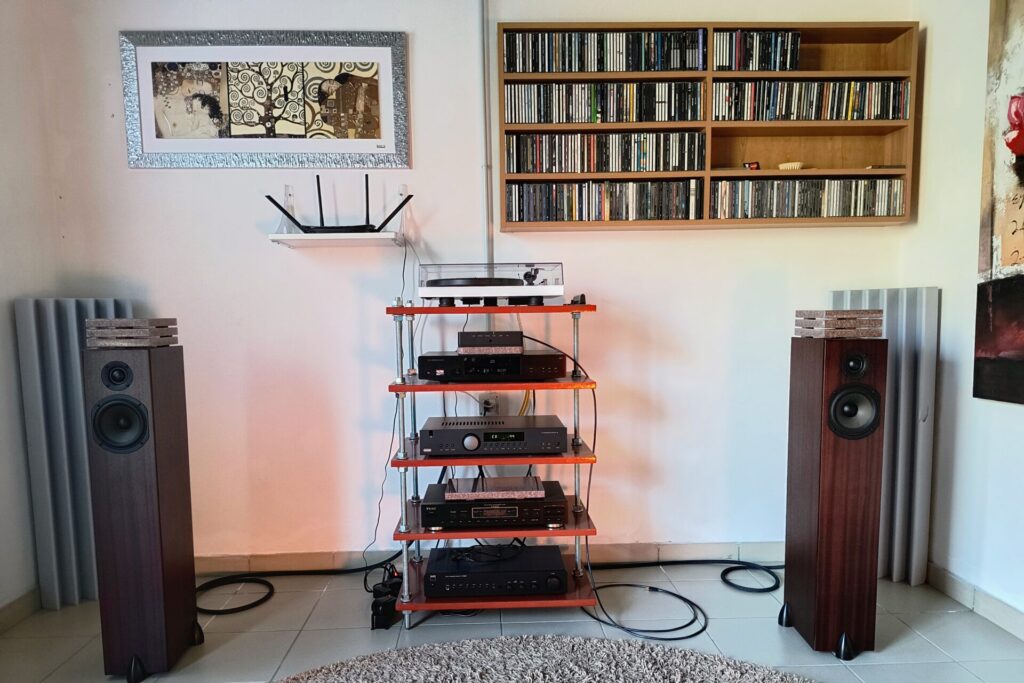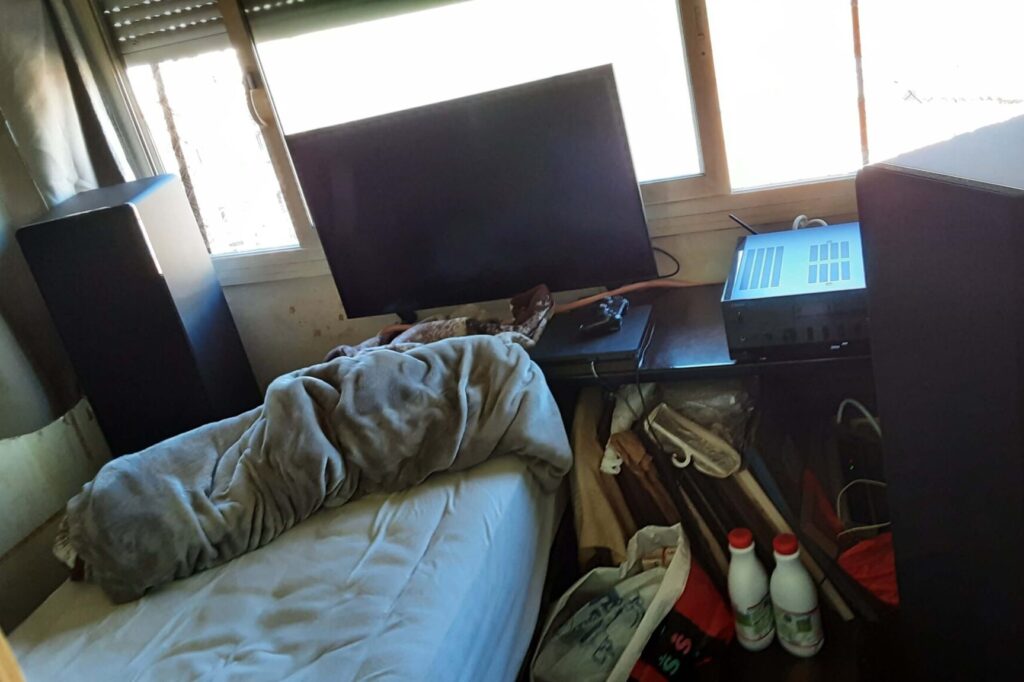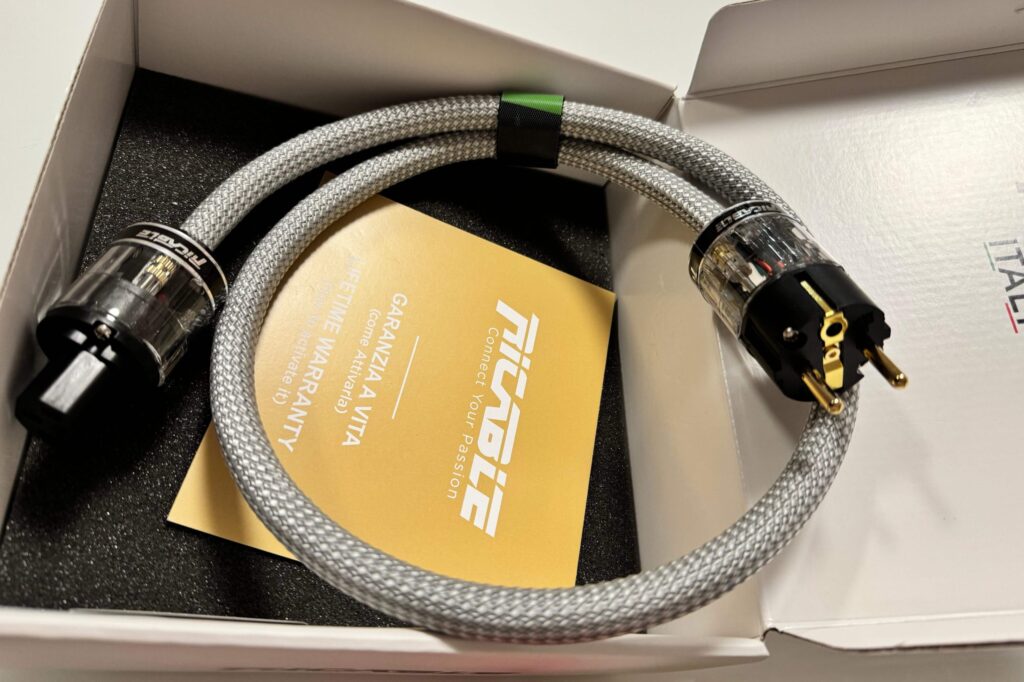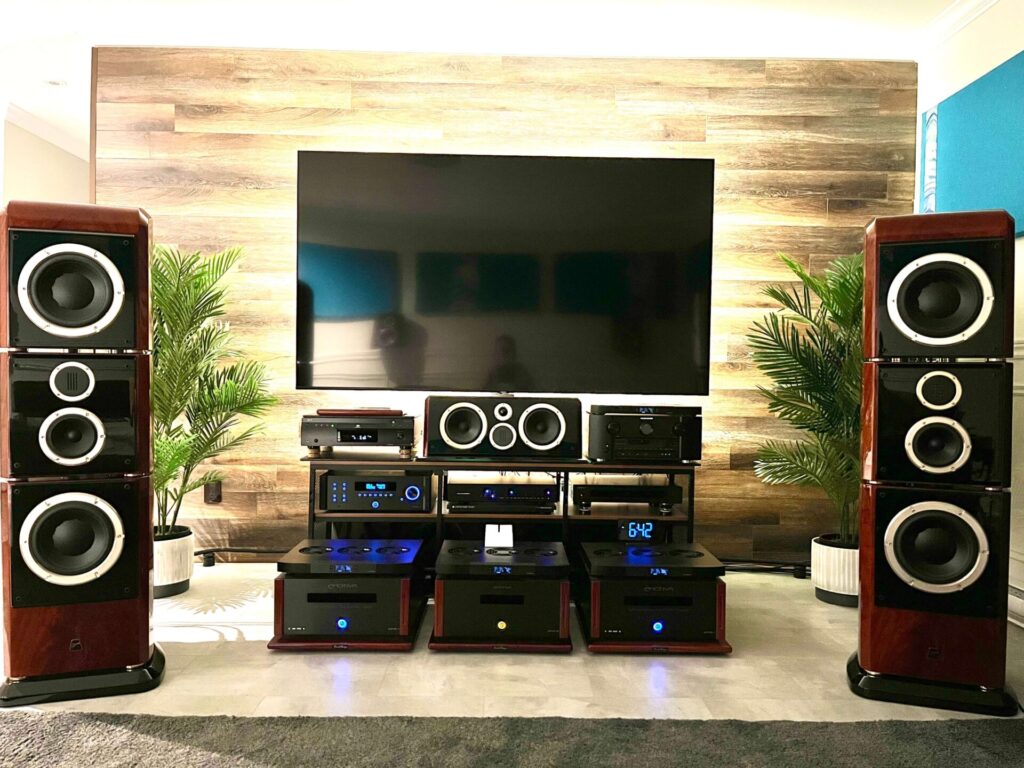The cable is packaged in a well-designed rigid box, with foam rubber on the bottom and on the lid; for further protection there is a cardboard box, which serves as a closure, where the technical data of the product is indicated with its serial number. The cable is wrapped in stretch wraps to keep it inside the box. Once extracted, you immediately notice the beautiful XLR connectors that are very robust and solid with a very precise insertion in the devices. The chrome and carbon finishes also make for a very attractive appearance. To differentiate the right and left channel, there are coloured rings in blue (left) and red (right). The external mesh sheathing has a blue and white weave that I liked as a choice.
I have to say that the first impact, even when holding it in the hand, is of a solid cable with a certainly fascinating design. Well done!
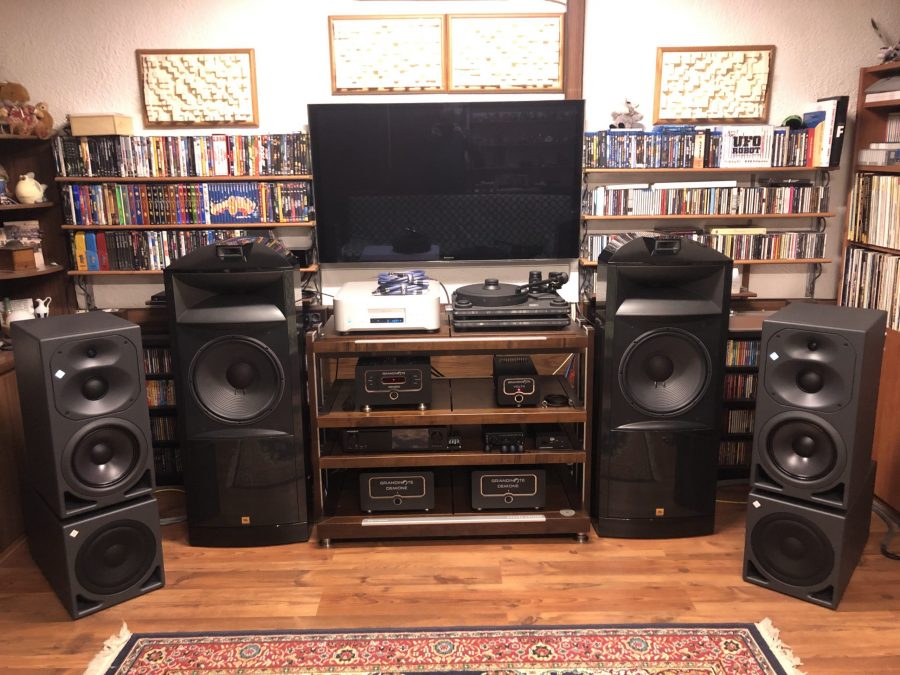
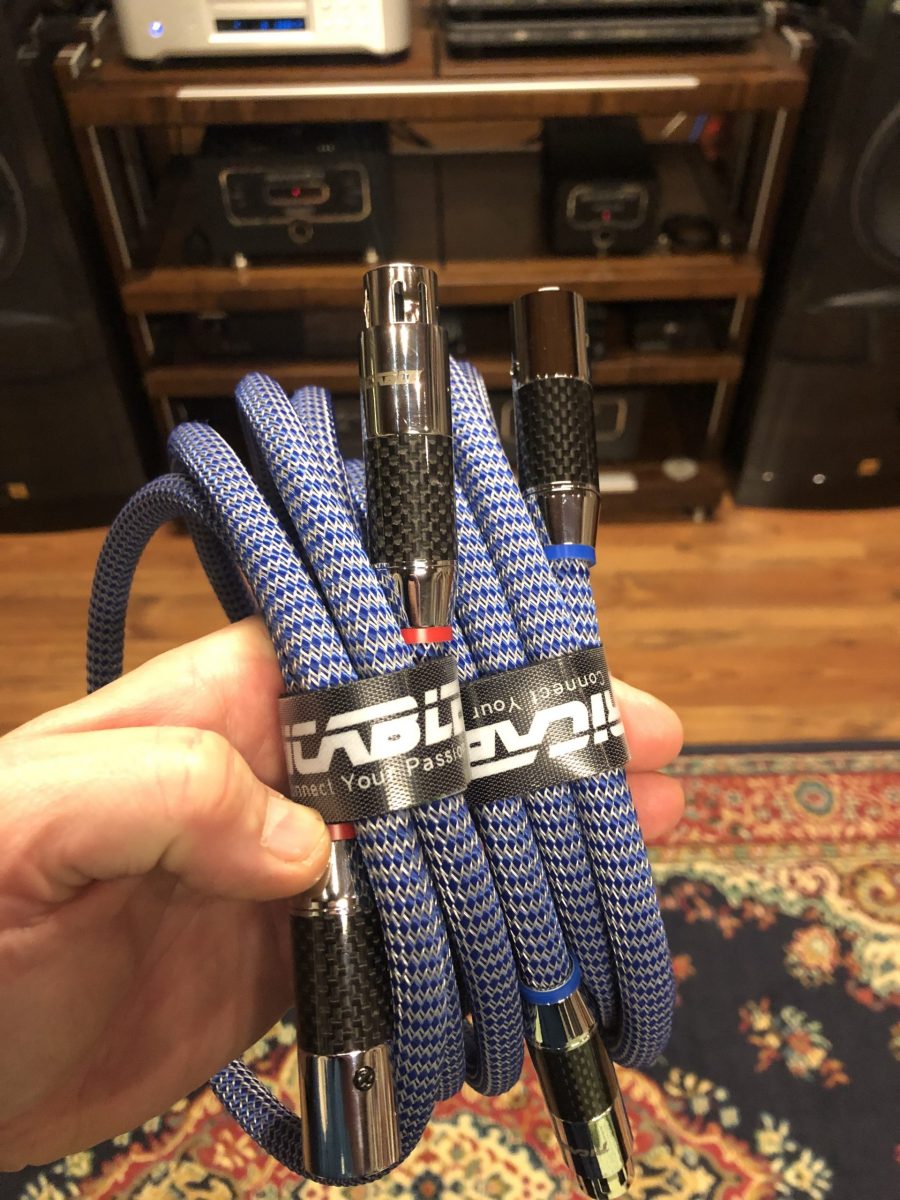
The cable tests were carried out on two types of system. The first consisted of a source, preamplifier, monophonic power amplifiers and associated passive loudspeakers. In this case the cable was tested on the pre and power amp connection. The second type involved active speakers and so the cable was used on the pre and active speaker connection. The main system consisted of:
- CD/SACD source = Esoteric K01
- HD file source = Grandinote Volta
- Preamplifier = Grandinote Genesi
- Monophonic endings = Demon Grandinote
- Passive Speakers = JBL K2 s9800 SE
- Active loudspeakers = Neumann KH 420
- Source Wiring = Acrolink Mexcel 7N-DA6300 1 m (both CD/SACD and HD file source)
- Passive loudspeaker wiring = Silcable special version made to JBL specifications. All on Finite Elemente Pagode Edition table
- Power cables = Forrest "Black" on all electronics
- Socket = Oyaide (with internal modification and full 'Silcable' wiring) + Silcable Six
The cables used for the test were:
- Cable 1 = Acrolink Mexcel from 7N-A2500 XLR 2 m
- Cable 2 = Ricable Invictus XLR 3 m
- Cable 3 = Sommer Cable Epilogue XLR 3 m
- Cable 4 = Klotz Titanium XLR 3 m
I must immediately say that the same result was found in both types, this means that the cable was not influenced by the connected devices. In total, in addition to the Ricable, three other cables were rotated, very different both for target (two come from the "pro" audio world) and, above all, for price. All the cables had the same length of 3 m except for the top one, where the very high cost forced me to the measure of 2 m, however sufficient to make the expected connections.
For the test I asked for the help of three friends of mine who, at different times, spent a few hours listening to music while the cables were swapped without them knowing which ones were connected. Apart from a general indication of 'cable 1', 'cable 2', 'cable 3' and 'cable 4' nothing was said about brand and cost. It was only at the end of the test, leaving the cable with the best rating connected, that they were able to verify the result for themselves. Clearly I didn't influence anyone and, on the contrary, apart from the most expensive cable of which they knew the existence since I have been using it for many years, of the other three, Ricable included, they didn't know the characteristics.
The result, of which I too was surprised, was identical on all occasions and confirmed what I had already noticed in the first week of owning theInvictus.
Impressions of the characteristics of the various cables tested were unanimous throughout. The tracks used have been of the most disparate kind, but one record in particular has been used as a reference, not because it is the best, but because it has an excellent balance, plenty of dynamics with a very extended and precise bass range and a naturalness that for me is at the top. This is Hell Freezes Over by the Eagles on CD from Geffen Records. In addition to CDs and SACDs we also used native high resolution files which in many cases proved very useful in understanding exactly how the cable affected the final result.
In all tests the volume was always left at the same level and was never changed when changing cables to ensure maximum transparency.
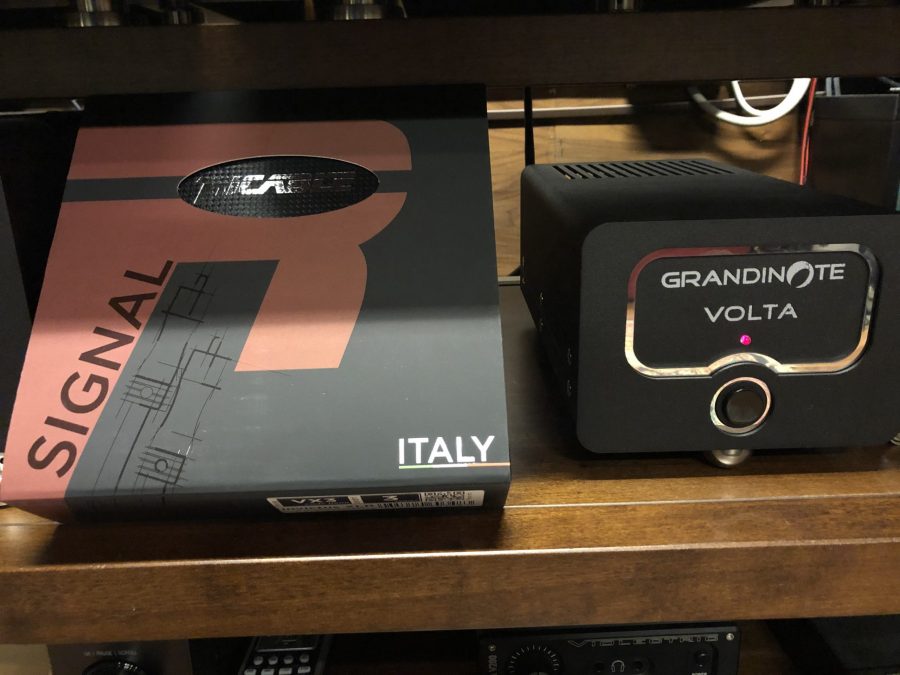
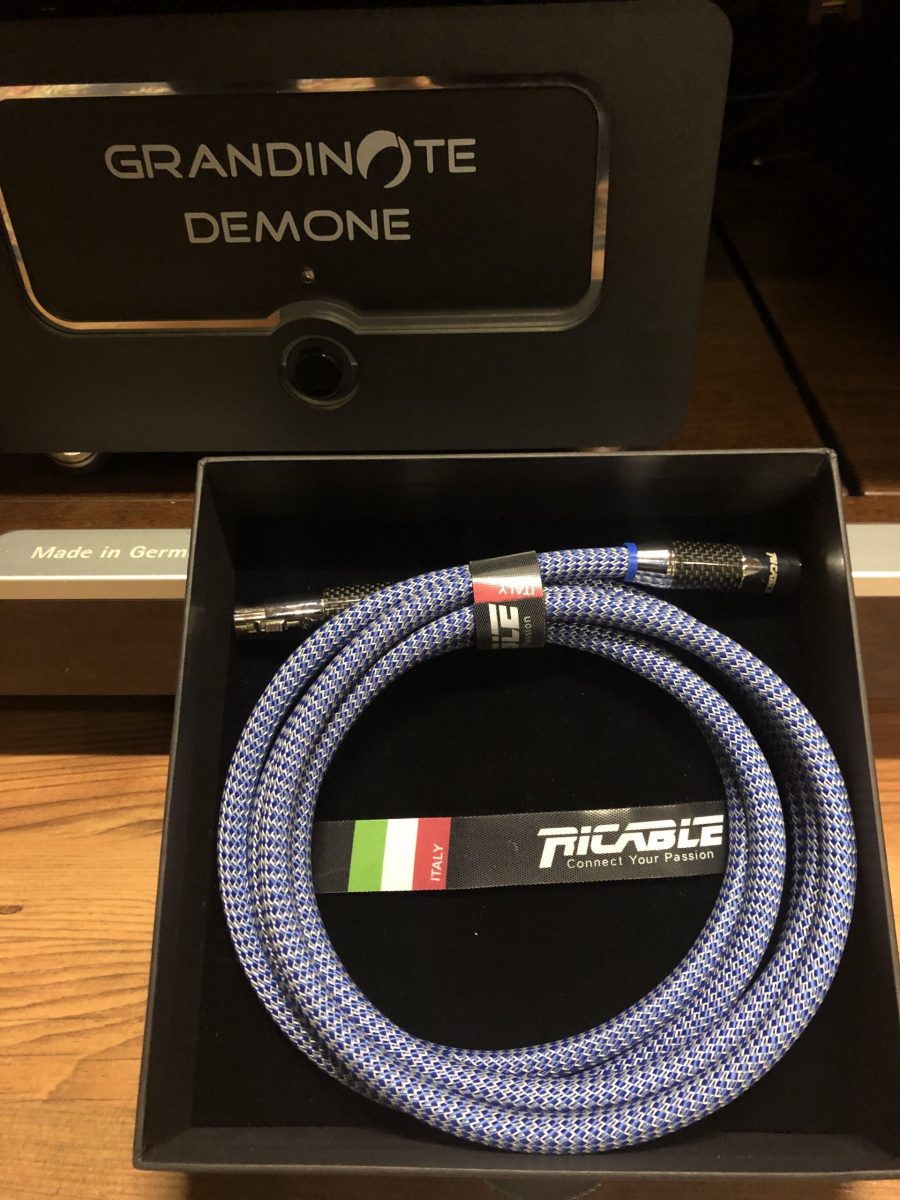
Did you find any?
At this point I must make an important premise before continuing; cables, as we know, can behave differently depending on the system to which they are connected, because some electronics may, due to their characteristics, not agree with the construction philosophies, the materials used and the technical choices applied by the manufacturer. I think that in this case something similar happened and I hope that nobody feels offended. Anyway, these are always personal feelings, even if shared, that have been detected in "my" listening room (here too we know that the environment can really make big differences).
The differences in fact have been there, they have been clear and felt by all the participants who, I must point out, have not been mistreated nor forced to give the final result 🙂 and have been tangible also at a physical level, especially in the low range. The latter, if not well reproduced, becomes easily detectable. Big differences also in the mid range which, in the system used, is very revealing.
Joking aside, now you'll want to know what the verdict is at the end of these tests, which have been carried out with the aim of understanding some dynamics in the audio world. In the end the least liked cable was, to my surprise, I swear, precisely the Ricable that gave the "poorest" result among the various contenders. The best in terms of absolute performance was the Acrolink 7N-A2500, as it was hoped it would be, but its very high price, more than twelve times the list price of the Ricable cable, put it on such a high level that in the end it is like comparing a Ferrari to a mid-range car... so let's say it's OK.
However, the Sommer Cable was the winner of the test, and this was the big surprise. It was chosen as the best objective sound because it lost something in precision and bandwidth extremes compared to the Acrolink, but it gained in naturalness, musicality, dynamics, giving that quid to the musical message that made it more natural and eliminated the listening fatigue. The Klotz was a good notch below the Acrolink, with less openness and less detail.
The Ricable was excluded almost immediately, in the sense that during the test it was the one that was less precise, with a lower dynamic range, making the result much flatter without giving rhythm to the music. Especially in jazz, there was a flattening of the instruments, often making the scene very confused, as if it couldn't unravel the sound message. It was as if he had to convey so much information at once that in the end it was confusing and lacked rhythm. The only positive aspect was the always correct exposure of the soundstage with a very realistic dimensional placement of the various instruments. Even the bass range suffered from this behaviour, being the worst of the three, especially in the deepest bass, which was less present than in the other three cables, almost as if it were "sticky" and with the "brake pulled". The Ricable is a pleasant listening experience, without listener fatigue. I'm really sorry I couldn't keep it in my set-up, but with the current electronics it doesn't match at all.
Anyway, I would like to thank Ricable and its staff for having realised this wonderful initiative. I apologize, but I'm not very good at writing reviews 🙂 .

